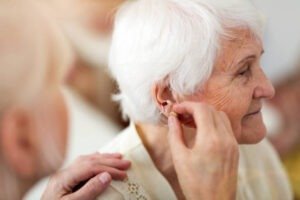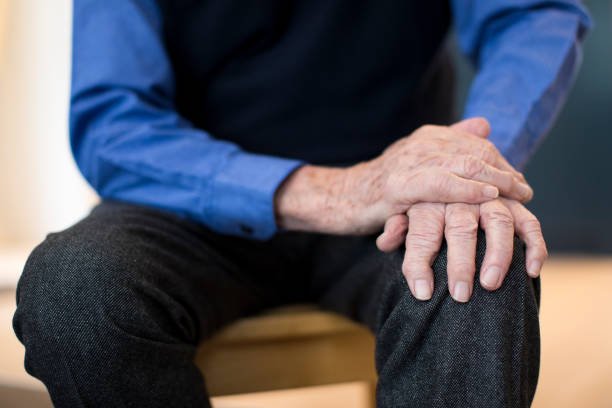Parkinson disease: Parkinson’s disease is a chronic and progressive neurological disorder that primarily affects movement. Named after Dr. James Parkinson, who first described it in 1817, the disease has been a subject of extensive medical research for over two centuries. Affecting millions of people worldwide, Parkinson’s not only impacts a person’s ability to move but also influences their mental and emotional well-being.
Despite medical advancements, there is still no known cure, making awareness, early detection, and proper management crucial in improving the quality of life for those affected.

What is Parkinson’s Disease?
Parkinson’s disease occurs when nerve cells (neurons) in a part of the brain called the substantia nigra become damaged or die. These neurons produce dopamine, a neurotransmitter that plays a key role in movement coordination. As these cells die, dopamine levels drop, leading to symptoms like tremors, rigidity, and slow movement.
The progression of Parkinson’s is gradual, and symptoms can vary from person to person. While it mostly affects people over the age of 60, early-onset Parkinson’s can also occur in younger adults, though it is less common.
Major Causes and Risk Factors:
The exact cause of Parkinson’s disease is still unknown, but researchers believe it results from a combination of genetic and environmental factors.
-
Genetics: Certain genetic mutations have been linked to Parkinson’s, although these are rare. Having a close relative with the disease may slightly increase the risk.
-
Environmental Triggers: Exposure to toxins such as pesticides or heavy metals may contribute to the development of Parkinson’s in some individuals.
-
Age: Risk increases significantly with age, especially after 60.
-
Gender: Men are more likely than women to develop Parkinson’s.
-
Head Trauma: Repeated injuries to the head, like those experienced in contact sports, may increase the risk.

Common Symptoms:
Parkinson’s symptoms typically begin subtly and worsen over time. They are generally divided into motor and non-motor symptoms:
Motor Symptoms:
-
Tremor: Usually starting in the hands or fingers, often occurring when the limb is at rest.
-
Bradykinesia: Slowness of movement, making everyday tasks harder.
-
Muscle Rigidity: Stiffness in the limbs and trunk.
-
Postural Instability: Impaired balance and coordination, leading to falls.
-
Shuffling Walk: Short, dragging steps that are difficult to initiate or stop.
Non-Motor Symptoms:
-
Sleep disturbances
-
Depression and anxiety
-
Memory and cognitive issues
-
Constipation
-
Loss of smell (anosmia)
Diagnosis:
There is no definitive test for Parkinson’s disease. Diagnosis is based on medical history, neurological examination, and the patient’s symptoms. Brain imaging, such as MRI or DaTsca,n may help rule out other conditions, but they cannot confirm Parkinson’s directly. A neurologist, particularly one specializing in movement disorders, is usually involved in diagnosis and treatment.
Stages of Parkinson’s Disease:
The progression of Parkinson’s is usually classified into five stages:
-
Stage 1: Mild symptoms, usually on one side of the body.
-
Stage 2: Symptoms affect both sides, but balance remains intact.
-
Stage 3: Balance is impaired; falls become more common.
-
Stage 4: Severe symptoms; the person needs help with daily activities.
-
Stage 5: Advanced stage; the person may be bedridden or wheelchair-bound.

Treatment Options:
While there is no cure for Parkinson’s, several treatments can help manage its symptoms effectively:
-
Medications:
-
Levodopa: The most effective drug, it converts to dopamine in the brain.
-
Dopamine Agonists: Mimic dopamine effects in the brain.
-
MAO-B Inhibitors: Prevent the breakdown of dopamine.
-
-
Surgical Treatments:
-
Deep Brain Stimulation (DBS): Electrodes are implanted in the brain to control motor symptoms.
-
-
Lifestyle Adjustments:
-
Exercise: Regular physical activity can help maintain mobility and balance.
-
Physical and Occupational Therapy: Helps improve daily function and prevent falls.
-
Healthy Diet: A balanced diet rich in fiber can help with digestive issues and overall health.
-
Living with Parkinson’s:
Living with Parkinson’s is challenging but manageable with the right support. Patients are encouraged to join support groups, stay socially active, and work closely with a healthcare team. Caregivers also play a vital role in helping with medication, mobility, and emotional support.
Research and Hope for the Future:
Ongoing research offers hope for better treatments and eventually a cure. New therapies, including stem cell treatment, gene therapy, and neuroprotective drugs, are under investigation. Organizations like the Michael J. Fox Foundation are funding innovative research projects aimed at understanding the disease better.
Parkinson’s disease is a life-altering condition, but with early diagnosis, proper treatment, and a strong support system, individuals can lead fulfilling lives. Raising awareness, investing in research, and supporting patients and caregivers are essential steps toward combating this complex neurological disorder.
Lifestyle सम्बन्धी ऐसी और भी जानकारियों और खबरों के लिए हमारे साथ जुड़े रहें! Khabari bandhu पर पढ़ें देश-दुनिया की ताज़ा ख़बरें — एजुकेशन, मनोरंजन, बिज़नेस, धर्म, क्रिकेट, राशिफल और भी बहुत कुछ।
खुश रहने के लिए ज़रूरी नहीं हैं महंगे कपड़े – अपनाएं सादगी भरा मिनिमल लाइफस्टाइल (Minimal Lifestyle)

